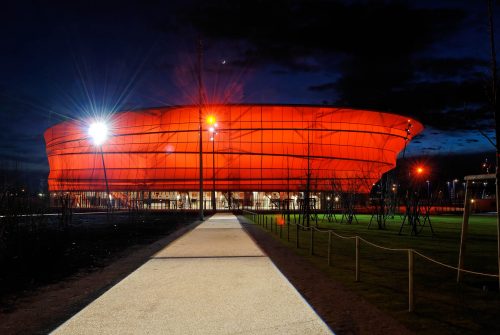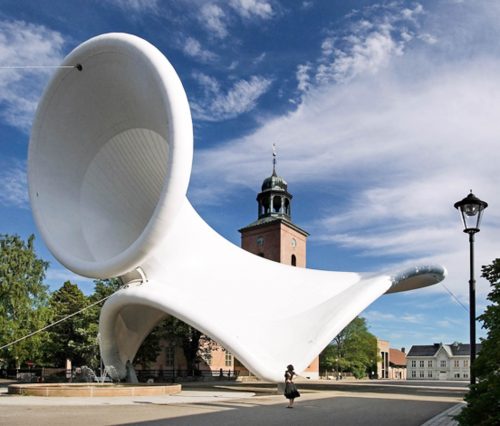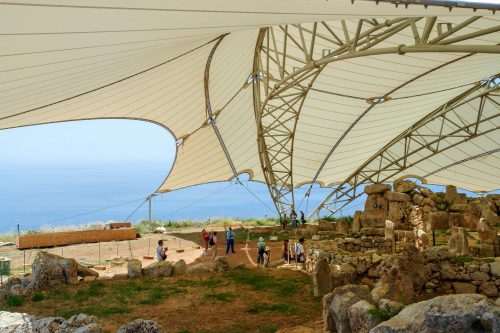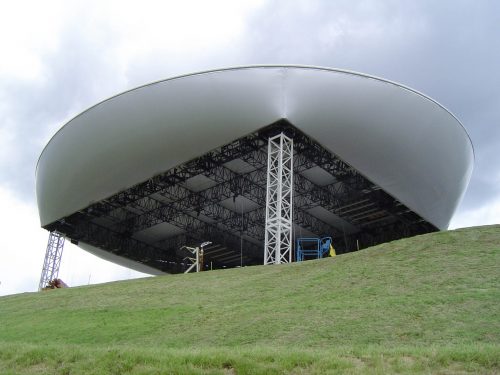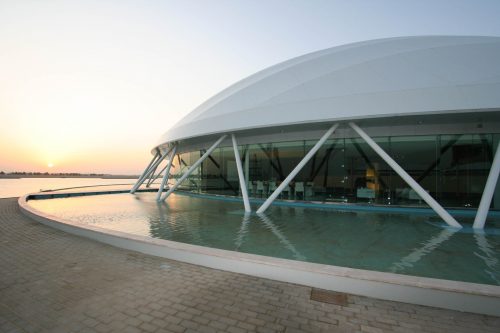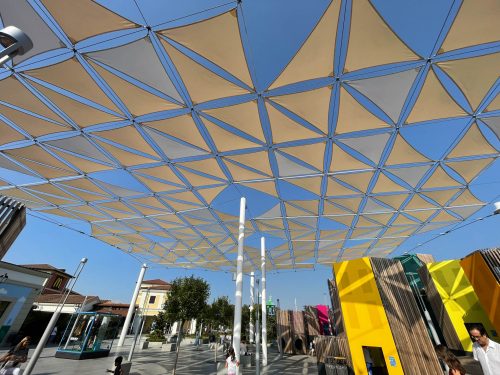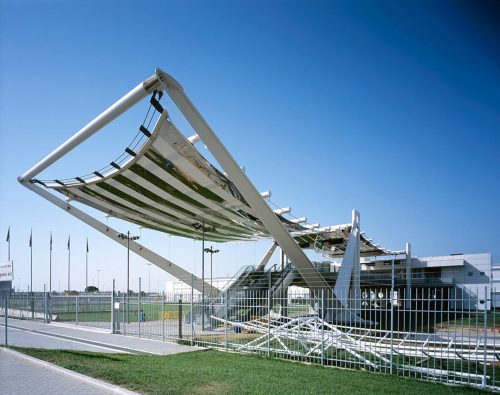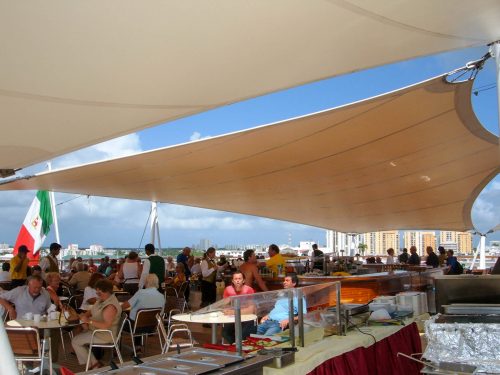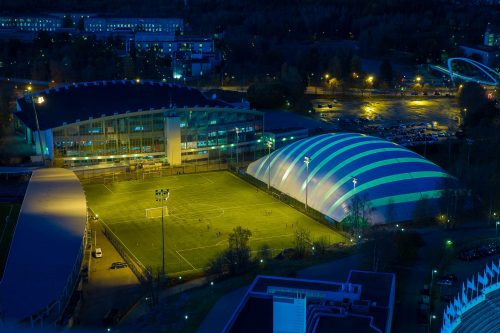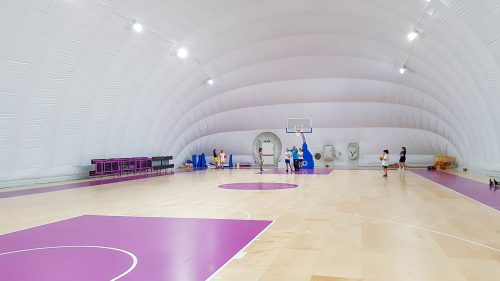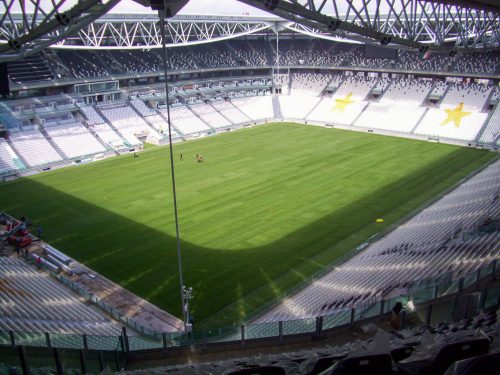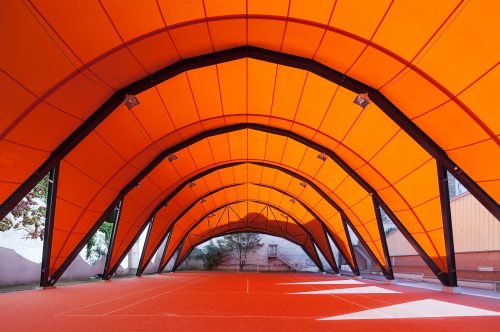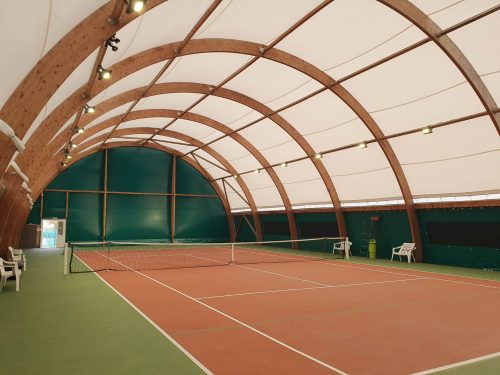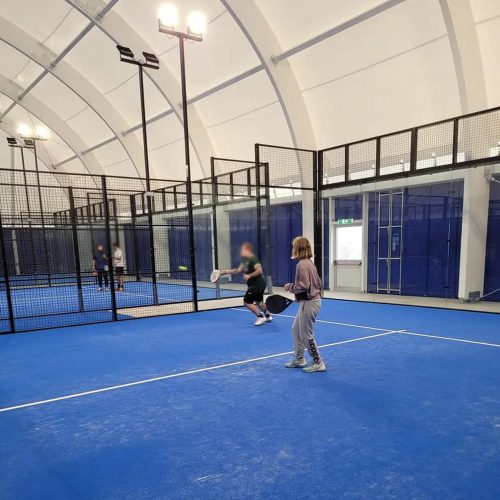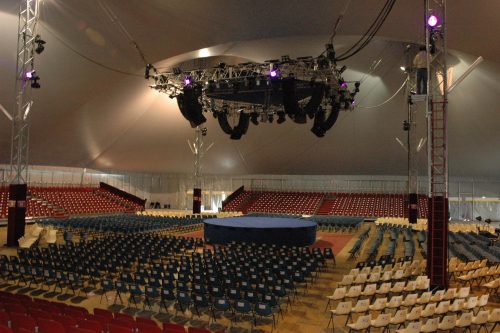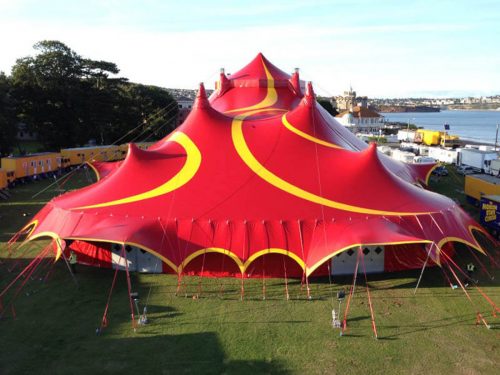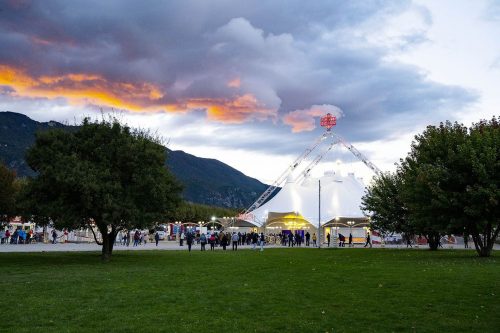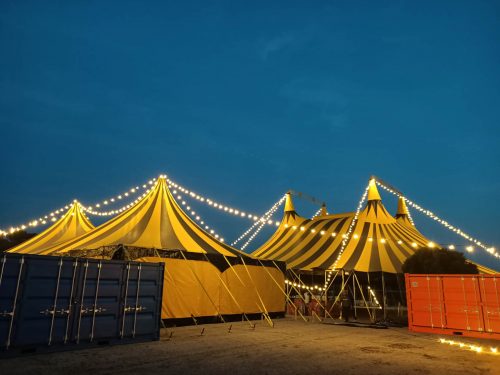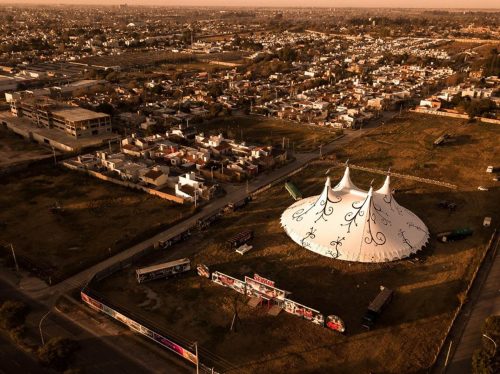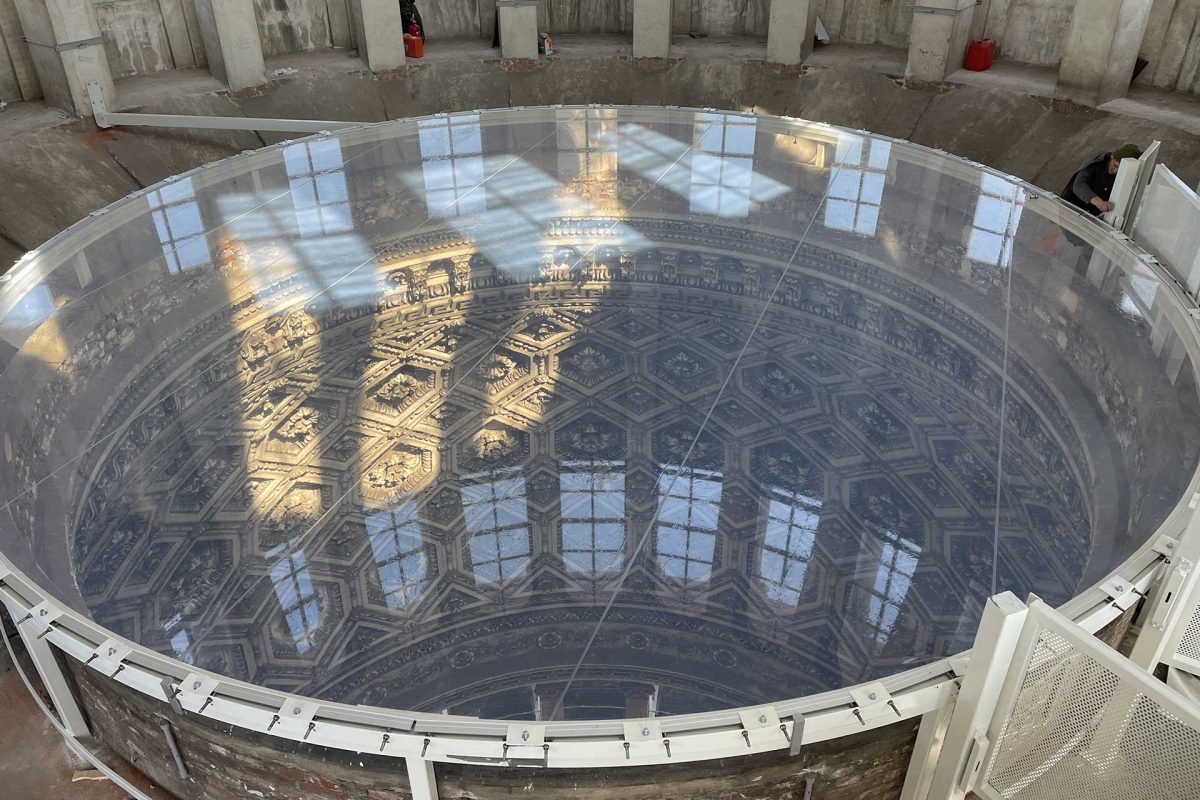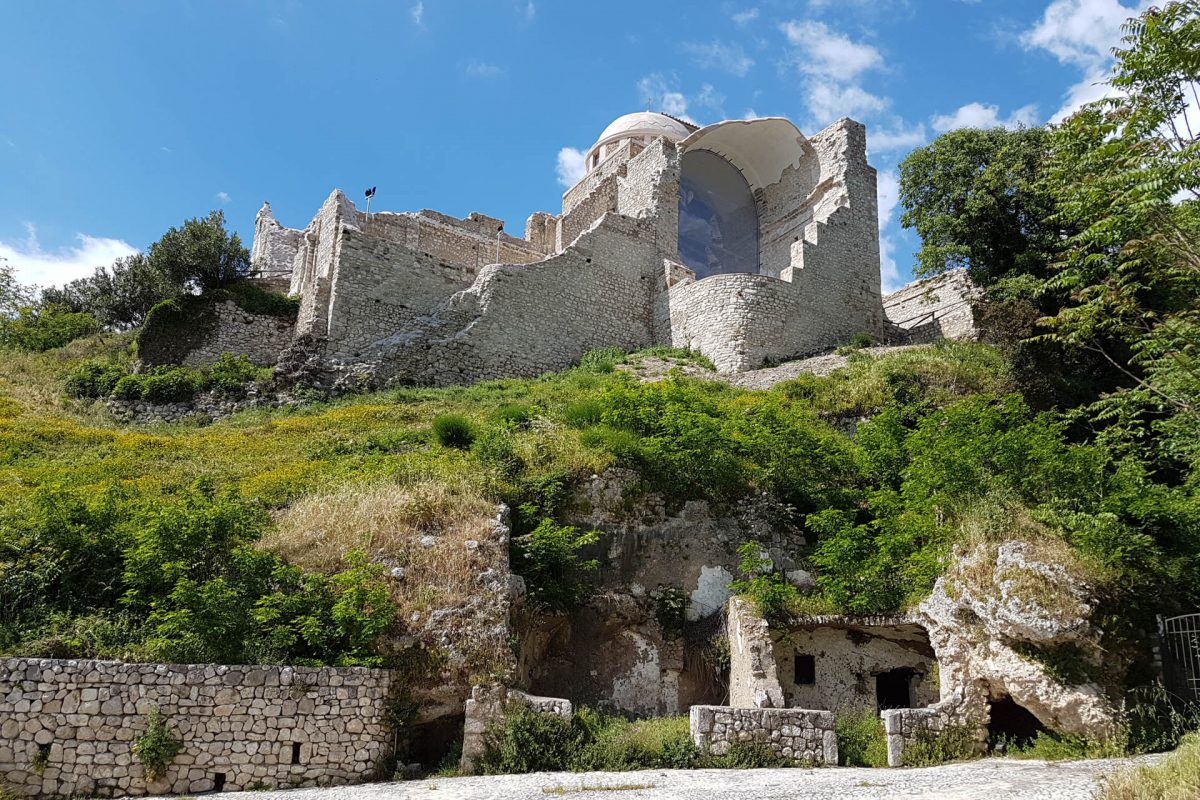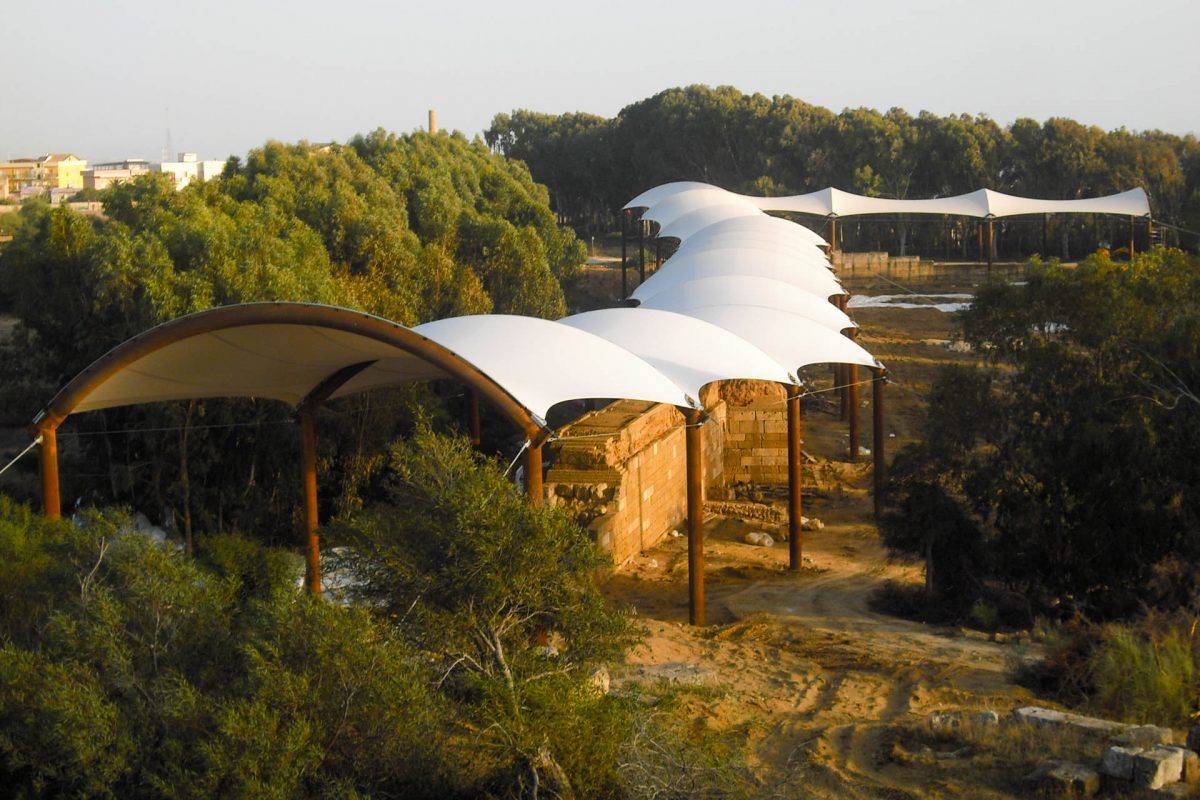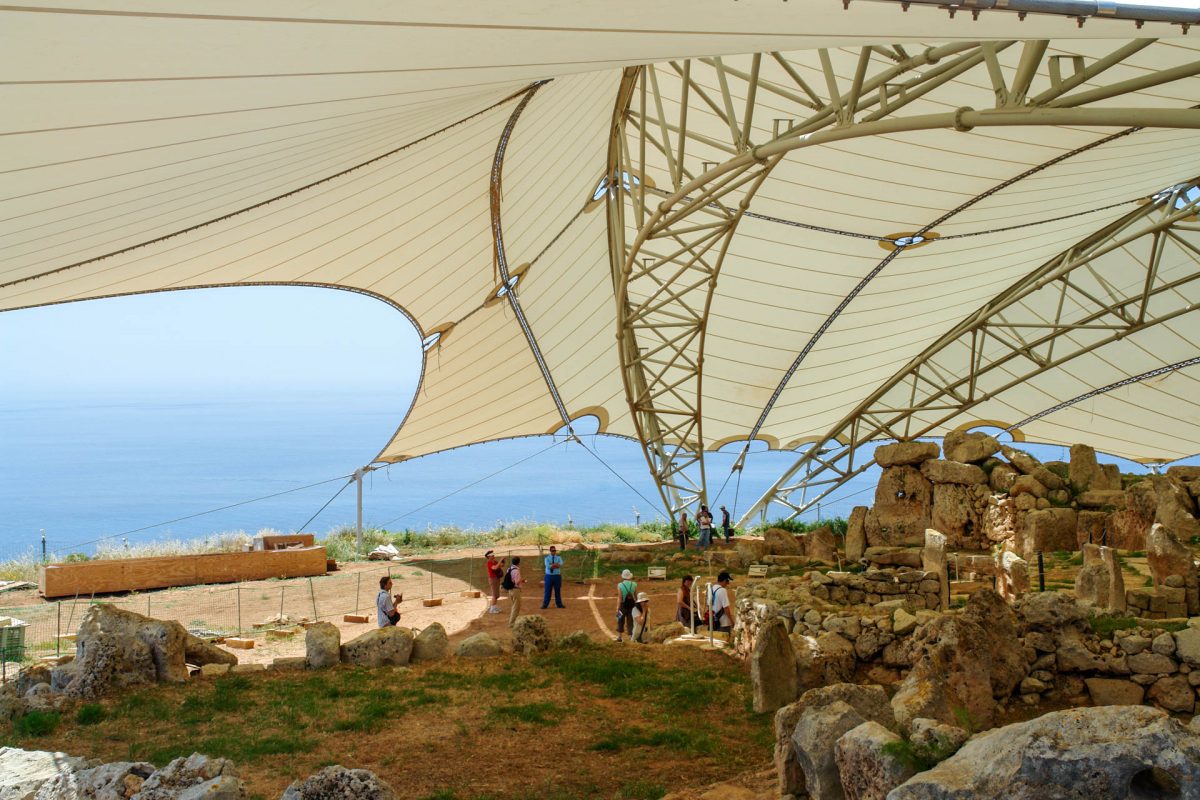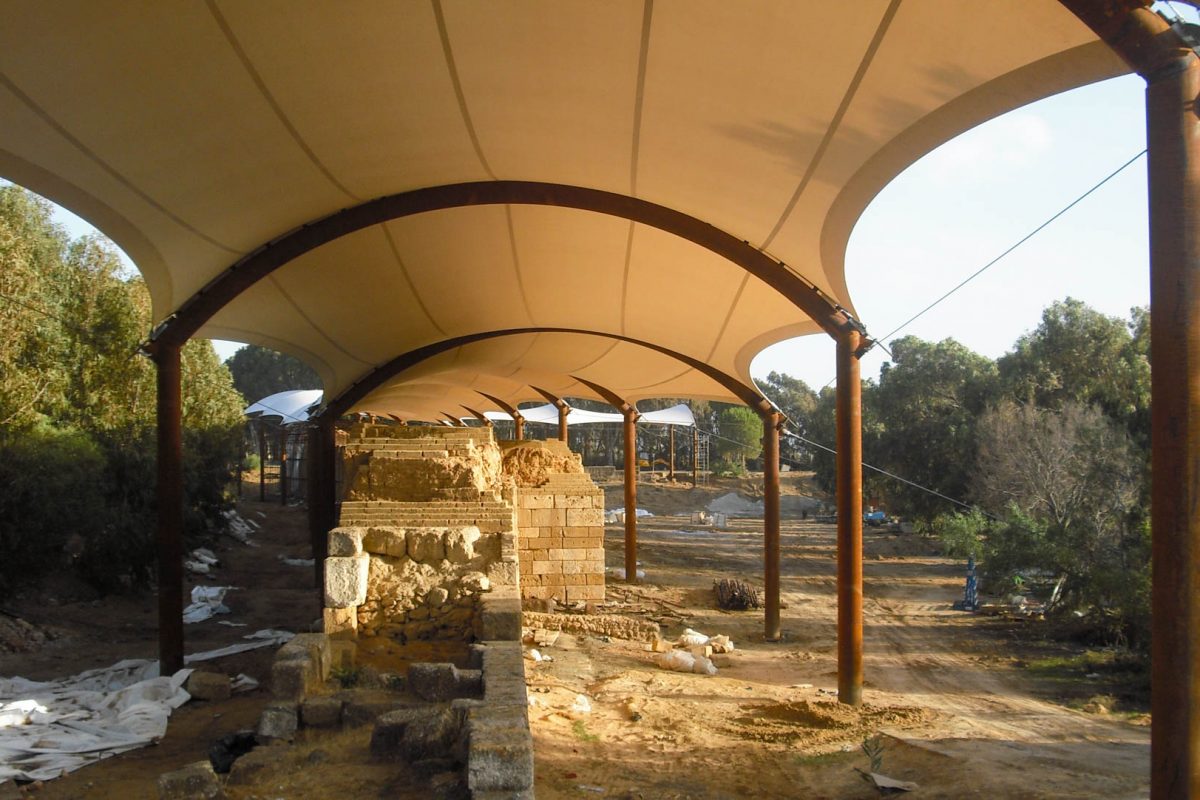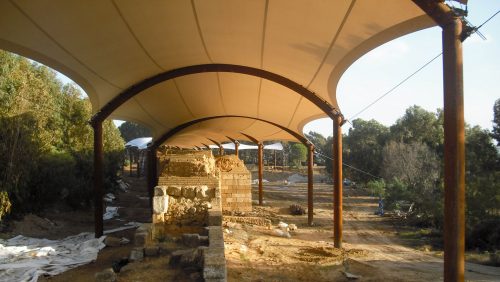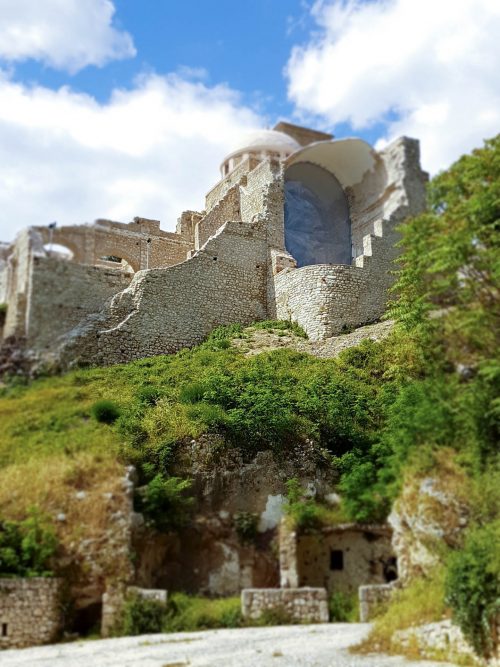Archaeological Areas
Protecting Archaeological Sites
Textile architecture has revolutionized the preservation of delicate archaeological sites around the world.
Since our first project at the Temple of Apollo in 1987, we’ve continued to push boundaries, covering landmarks like the Megalithic Temples of Malta, and incorporating cutting-edge ETFE film in our latest installations.
Preserving an archaeological site requires a delicate balance between minimizing the structure’s impact on the land and creating a comfortable space for archaeologists and visitors alike.
Flexibility and adaptability are essential. Each monument or historical artifact has its unique characteristics, demanding tailored solutions that shield against environmental and anthropogenic risks, such as weathering, wear, temperature fluctuations, and potential intrusions or tampering.
Utilizing membrane structures ensures a minimally invasive and entirely reversible intervention. This aligns seamlessly with the guidelines set by heritage authorities, like the Italian Superintendencies, and meets the approval of professionals in the field, including archaeologists and restorers. Additionally, it infuses the site with an expressive potential capable of reinterpreting the built environment.
From ancient temples to age-old relics, our textile architecture stands as a testament to modern preservation techniques that not only safeguard our rich history but also breathe new life into these invaluable treasures.




